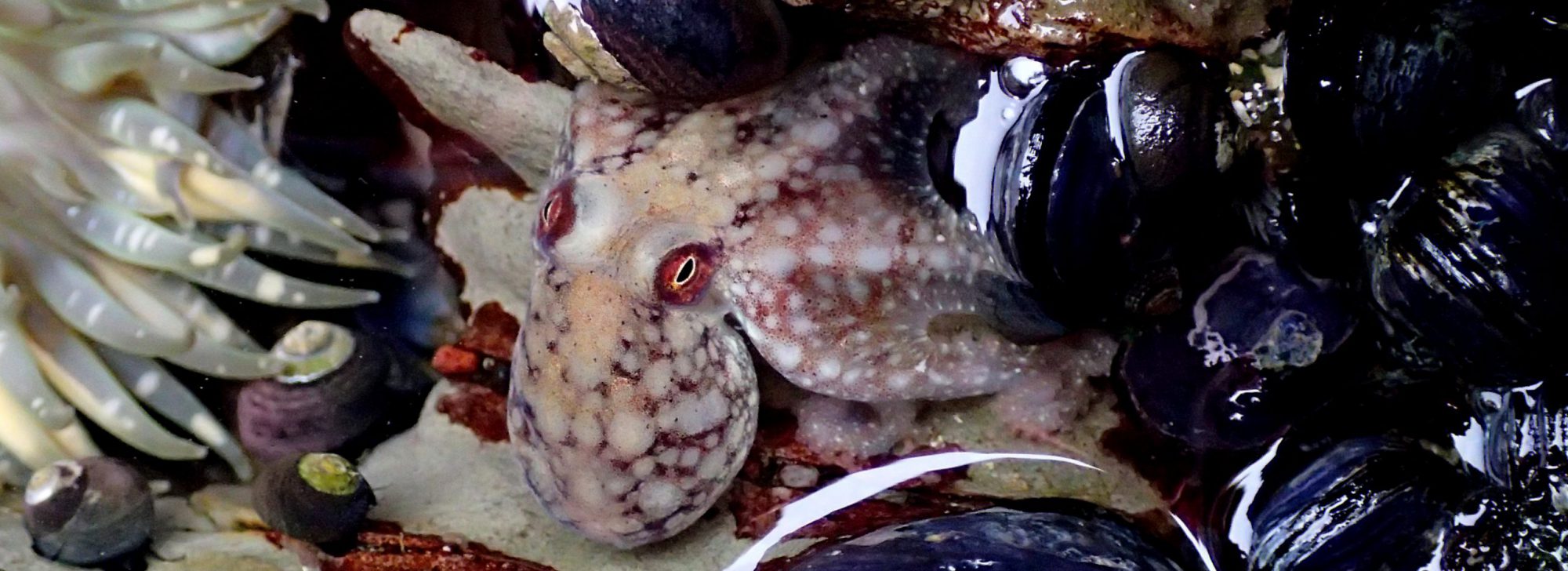Everybody knows that climate change is a hot–pun intended!–topic in both science and politics these days. Here along the northern California coast it seems that sea surface temperature (SST) has been elevated for at least a year now. I remember a time, not too many years ago, when I would put my hands into my seawater table and they’d go numb after several minutes. This told me that the water temperature was in the 11-12 ºC range. But that hasn’t happened for a while, and recently I’d put my hands in the water and it didn’t even really feel cold. My trusty not-fancy thermometer has been telling me that the temps have been hovering at around 14ºC.
The other day it occurred to me that I have a 20-year record of water temperatures from my seawater table, which is a pretty fair proxy for SST in the area. The numbers may not jive exactly with SST data produced by oceanographic instruments, but the trends should be very similar. If you click on the figure you’ll be able to see a larger version of it.
There are a couple of notable trends in these data. I was pleased to see a strong signal for the 1997-1998 El Niño event, visible as a prolonged period of elevated temperatures in the fall and winter. This was followed by a La Niña in 1998-1999, when temperatures were lower than average for a few months. Aside from those events, SST fluctuates between about 16º in the summer-fall and 11-12º in the winter-spring.
One more thing. Take a look at the far right end of the graph. Notice what appears to be a cooling trend so far in the spring of 2015?
Here are the data from March and the first three days of April:
So there’s definitely a cooling trend in the past few days. The interesting question is: Why is this happening now, when it hasn’t happened for about two years?
The answer, in a nutshell, is the wind. For the past week or so, we’ve had screaming afternoon winds at the marine lab, coming from the northwest. Northwest winds blowing down the coast drive the process of coastal upwelling, which results in cold water rising to the surface; it usually takes 3-4 days of sustained winds to start upwelling. This upwelled water, in addition to being cold, also contains a lot of nutrients, which are used as fertilizers by the primary producers of the marine ecosystem, the phytoplankton. Most of the phytoplankton are photosynthetic unicellular algae (NOT plants) that harvest the energy from sunlight and use it to fix carbon dioxide into organic molecules. The fixed carbon in turn feeds grazers such as copepods, which are then eaten by small predators, which are eaten by larger predators and so on up the food chain.
What this all means is that we may, for the first spring in two years, be getting some productive upwelling. I don’t think I’m the only marine biologist in the area who is looking forward to seeing whether this apparent upwelling continues. If it does, then we should see the biota respond accordingly. Mind you, a four-day streak does not indicate a long-term return to typical spring upwelling conditions, and it may be merely a blip in the warmer conditions that are the new normal for us, but it is a stronger signal than we’ve seen in a few years. In any case, I will be keeping an eye on both the water temperature and the critters living in it.



1 thought on “What’s wind got to do with it?”